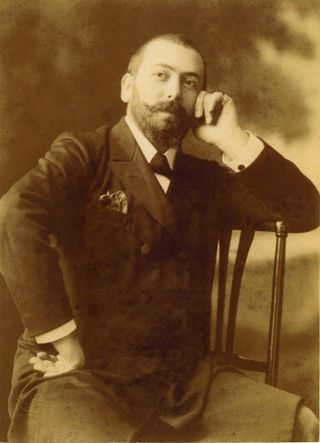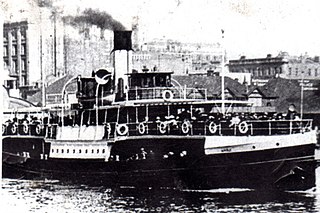
Manly is a beach-side suburb of northern Sydney, in the state of New South Wales, Australia. It is 17 kilometres (11 mi) north-east of the Sydney central business district and is currently one of the three administrative centres of the local government area of Northern Beaches Council. Manly has a long-standing reputation as a tourist destination, owing to its attractive setting on the Pacific Ocean and easy accessibility by ferry.

Sydney Ferries is the public transport ferry network serving the city of Sydney, New South Wales. Services operate on Sydney Harbour and the connecting Parramatta River. The network is controlled by the New South Wales Government's transport authority, Transport for NSW, and is part of the authority's Opal ticketing system. In 2017–18, 15.3 million passenger journeys were made on the network.

The Dee Why and Curl Curl, were two identical steam ferries servicing Sydney Harbour's Circular Quay to Manly service. Both commissioned in 1928, they were the largest ferries on Sydney Harbour until the 1938 introduction of the South Steyne.
The following lists events that happened during 1896 in Australia.

Manly ferry services operate on Sydney Harbour connecting the Sydney suburb of Manly with Circular Quay in the CBD, a journey of seven nautical miles.

PS Brighton was a ferry used on the Sydney to Manly run. The biggest Manly ferry at the time and the largest paddle steamer to operate on Sydney Harbour, she was well-appointed and popular with passengers.

Manly Wharf is a heritage-listed passenger terminal wharf and recreational area located at West Esplanade and serving Manly, a Sydney suburb in the Northern Beaches Council local government area of New South Wales, Australia. Since the 1850s, it has served as the Manly embarkation and disembarkation point for the Manly to Sydney ferry service.

Henry Walter Barnett, usually known as H. Walter Barnett, was an Australian photographer and filmmaker. Barnett was a prominent portrait photographer of the late 19th and early 20th centuries, establishing the successful Falk studios in Sydney. Later in his career he was based in London, England, with studios at Hyde Park Corner and Knightsbridge. Barnett became involved in filmmaking after meeting cinematographer Marius Sestier in 1896, and with Sestier made some of the first films shot in Australia.

Marius Ely Joseph Sestier was a French cinematographer. Sestier was best known for his work in Australia, where he shot some of the country's first films.

Bellubera was a ferry operated by the Port Jackson & Manly Steamship Company on the Manly service. Launched in 1910, she was the third of six "Binngarra-type" vessels. Upon her 1936 conversion from steam power, she became the first diesel-electric vessel in Australia. She was decommissioned in 1973, and scuttled at sea in 1980.

Karrabee was a ferry operated by Sydney Ferries Limited and its NSW State Government operated successors on Sydney Harbour from 1913 until 1984. A wooden ferry built at the time of Sydney Ferries' rapid early twentieth century, she and near "sister", Karingal, were the smallest of the fleet of round-end "K-class ferries".

Binngarra was a ferry operated by Port Jackson & Manly Steamship Company on the Manly service. Launched in 1905, she was the first of six similar vessels built for the company–the Binngarra class—the success of which saw three of her sister vessels serving through to the 1970s and 1980s.

Manly (II) was a ferry that served on the Sydney to Manly run from 1896 to 1924.

Narrabeen was a paddle steamer ferry on Sydney Harbour that ran on the Circular Quay to Manly route.
The 1896 Melbourne Cup was a two-mile handicap horse race which took place on Tuesday, 3 November 1896.

Patineur Grotesque was a film of a comic roller-skater.
New South Wales Horse Artillery in Action was a short documentary film.
Newhaven was an Australian bred Thoroughbred racehorse who won the 1896 Victoria Derby and the 1896 Melbourne Cup carrying a record weight for a 3 year old of 7st.13lb by 6 lengths.

Sydney Harbour ferry services date back to the first years of Sydney's European settlement. Slow and sporadic boats ran along the Parramatta River from Sydney to Parramatta and served the agricultural settlements in between. By the mid-1830s, speculative ventures established regular services. From the late-nineteenth century the North Shore developed rapidly. A rail connection to Milsons Point took alighting ferry passengers up the North Shore line to Hornsby, New South Wales via North Sydney. Without a bridge connection, increasingly large fleets of steamers serviced the cross harbour routes and in the early twentieth century, Sydney Ferries Limited was the largest ferry operator in the world.















